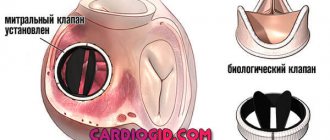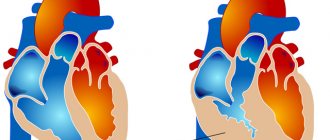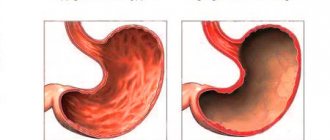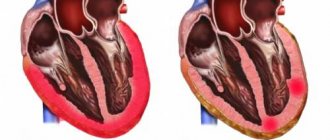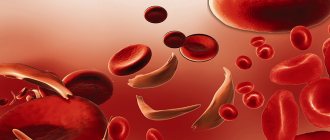Aplastic anemia is a serious disorder of the formation, development and maturation of blood cells. It is characterized by inhibition of the hematopoietic function of the bone marrow, which is manifested by a deficiency in the formation of white and red blood cells, as well as platelets. Sometimes there is a lack of formation of only red blood cells. The disease is considered one of the most severe disorders of hematopoiesis and, in the absence of adequate treatment, can cause death within several months. It affects male and female patients equally between the ages of ten and twenty-five or over fifty. According to medical statistics, two cases of pathology per one million people are diagnosed every year.
The Department of Hematology at CELT offers diagnosis and treatment of aplastic anemia in Moscow. Our multidisciplinary clinic was one of the first in the Russian Federation to begin operating in the market of paid medical services and has been successfully continuing it for the third decade. The hematology department receives consultations from leading domestic specialists, who have a modern diagnostic and treatment facility that allows them to accurately diagnose and carry out treatment in accordance with international standards. The cost of services is available in our price list, which we update regularly. To avoid misunderstandings, we ask you to check the numbers with our information line operators.
Aplastic anemia - what is it?
Aplastic anemia is a disorder of hematopoiesis, which is accompanied by anemic and hemorrhagic syndrome, as well as various infections that act as complications. A patient wondering what aplastic anemia is, should clearly understand only one thing: this type of anemia is an extremely serious disorder that requires immediate medical attention.
If aplastic anemia develops during life, then the disease is acquired. Often its cause cannot be determined. In this case, they talk about idiopathic anemia. In addition, aplastic anemia can be congenital and hereditary.
Prevention
Clinical recommendations from doctors provide two options for prevention: primary and secondary.
Primary is designed for a relatively healthy person. To prevent the development of anemia, it is necessary to eat properly and engage in feasible sports. We should not forget about regular procedures to strengthen the immune system. It is also necessary to periodically undergo preventive examinations with a therapist, and if ailments are identified, begin treatment immediately.
Secondary prevention is carried out to slow the progression of an already confirmed disease. For this purpose, it is necessary to take prescribed medications, carefully monitor your health, and if new symptoms appear, immediately seek medical help.
Aplastic and hypoplastic anemia - what is the difference?
There are a number of differences between aplastic and hypoplastic anemia, but they are not too significant. Therefore, if a doctor sees a diagnosis of “hypoplastic anemia” in a patient’s chart, he considers it as “aplastic anemia.”
However, some clarifications should be made:
- Aplastic anemia develops as a result of disturbances in the structure of stem cells, and hypoplastic anemia manifests against the background of autoimmune pathologies.
- In aplastic anemia, the bone marrow is severely affected, leaving it unable to produce any cells. Hypoplastic anemia is characterized by a less intense inhibition of hematopoietic function.
- The mechanism of development of aplastic and hypoplastic anemia differs.
- If the treatment is chosen correctly, then hypoplastic anemia can be put into remission, which will last quite a long time. While aplastic anemia is very difficult to treat.
- The prognosis for survival is more favorable with hypoplastic anemia.
Some time ago, hypoplastic and aplastic anemia were considered the same pathological process; they simply characterized different stages of its development. Although there are still disagreements in scientific circles on this issue. In any case, in the article both of these terms will characterize the same violation.
Treatment of aplastic anemia is a complex task that even the best doctors are not always able to solve. Possible directions for treatment will be discussed below.
Treatment of other diseases starting with the letter - a
| Treatment of lung abscess |
| Treatment of brain abscess |
| Treatment of liver abscess |
| Treatment of splenic abscess |
| Treatment of overuse headaches |
| Treatment of pituitary adenoma |
| Treatment of adnexitis |
| Treatment of acromegaly |
| Treatment of alcoholism |
| Treatment of alcoholic hepatitis |
| Treatment of alcoholic liver disease |
| Treatment of allergic dermatitis |
| Treatment of alopecia |
| Treatment of alveolitis |
| Treatment of amoebiasis |
| Treatment of liver amyloidosis |
| Treatment of renal amyloidosis |
| Treatment of sore throat |
| Treatment of aneurysm |
| Treatment of ankylosing spondylitis |
| Treatment of anuria |
| Treatment of kidney aplasia |
| Treatment of ovarian apoplexy |
| Treatment of appendicitis |
| Treatment of arthrosis of the knee joint (gonarthrosis) |
| Treatment of ascariasis |
| Treatment of ascites |
| Treatment of pulmonary atelectasis |
| Treatment of atherosclerosis |
| Treatment of atypical pneumonia |
| Treatment of autoimmune hepatitis |
The information is for educational purposes only. Do not self-medicate; For all questions regarding the definition of the disease and methods of its treatment, consult your doctor. EUROLAB is not responsible for the consequences caused by the use of information posted on the portal.
Aplastic anemia - main types
Aplastic anemia as a disease was discovered back in the 19th century. However, the trend of its development is absolutely not encouraging. Every year there are more and more people getting sick. The only good news is that aplastic anemia is not always a death sentence. The development of modern transplantology makes it possible to transplant bone marrow into a person and save his life. Also, a certain contribution to the treatment of this disorder is made by the treatment regimen with immunosuppressants.
Modern medicine distinguishes 2 types of aplastic anemia (acquired and congenital/hereditary), which, in turn, are divided into several subtypes. Each of them must be considered separately.
Subtypes of acquired aplastic anemia:
- True anemia
, which in half of the cases is idiopathic, that is, the causes of its occurrence cannot be determined. With true anemia, all directions of the hematopoietic system are suppressed.
Options for the development of the disease may be as follows:
- Acute anemia lasts no more than 60 days and always ends in death.
- The subacute form of the disease can last 60 days or more. If we are talking about aplastic anemia, then the patient’s condition can stabilize, but for a short period of time. With hypoplastic anemia, remissions may be longer, but they will still be replaced by acute phases.
- Chronic form of the disease. The course of anemia is smoothed, death occurs 3-5 years after the manifestation of the disease, in rare cases, patients live up to 10 years. Even less often, patients recover.
- Partial red cell aplasia of the bone marrow (PRCA)
) is acquired aplastic anemia, which is of an autoimmune nature. The bone marrow is not able to perform its usual functions, since the antigens of its erythrocarcytes are affected by autoantibodies, destroying them. Most often, the cause of partial aplasia cannot be determined. Although in some cases the disease can develop against the background of tumors of the thymus gland. In adolescence, partial red cell aplasia may result in the patient's recovery. Therefore, experts distinguish this pathology into a separate form, calling it adolescent PCCA.
- Hypoplastic anemia with a hemolytic component.
Many scientists argue that this type of disease is only a stage of paroxysmal nocturnal hemoglobinuria. A distinctive feature of this type of disease is that it is periodically accompanied by hemolytic crises.
In addition to acquired aplastic anemia, there are congenital and hereditary forms of the disease.
They, in turn, are divided into the following types:
- Fanconi anemia
, which is transmitted in an autosomal recessive manner. It appears in homozygous carriers between the ages of 4 and 10 years. Fanconi anemia may be accompanied by gross changes in the development of internal organs, or may occur with minor damage to them.
- Joseph-Diamond-Blackfan anemia.
Until now, scientists have not established by what type of inheritance this pathology is inherited. There are suggestions that the transmission of defective genes occurs in an autosomal dominant manner, although other scientists insist on an autosomal recessive mode of transmission. There is no single point of view on this issue. The pathology manifests itself almost immediately after the birth of the child. As a rule, by 4 months, 2/3 of children already have its first signs. If they are not there, then they will definitely appear by the time the child is one year old. This type of anemia can be accompanied by severe damage to internal organs, or occur without such changes.
- Estren-Dameshek hypoplastic anemia.
In this case, the sick child will experience impaired hematopoietic function, but developmental anomalies will not be detected.
If hypoplastic anemia develops against the background of congenital developmental anomalies, then the disease manifests itself at an early age. With the acquired form of the disease, a person is born completely healthy.
Etiology
Hypoplasia of hematopoiesis can be caused by the influence of various external factors, which are usually divided into two groups: 1) factors with an obligate myelotoxic effect, proportional to the dose - ionizing radiation, benzene and its derivatives (benzene anemia develops), antitumor drugs (chlorethylamines; phosphoramides; antimetabolites - folic acid antagonists, analogues of purines, pyrimidines, etc.; antimitotic agents - colchicine, vinca alkaloids; antibiotics - bruneomycin, rubomycin, adriamycin, carminomycin), inorganic arsenic compounds, estrogens, etc.; 2) factors with a facultative myelotoxic effect, detected only in isolated cases - antibacterial, anticonvulsant, antithyroid, antihistamines, tranquilizers (aplastic post-drug anemia develops), insecticides, etc.; direct connection with the development of G. a. with the dose and duration of use of the drug in these cases is not noted. The second group should include relatively rare cases of development of G. a. with tuberculosis, pregnancy. G. a., associated with the ingestion of overwintered grain (see Aleukia alimentary-toxic), practically does not occur.
Of the factors with a facultative myelotoxic effect, the antibiotic chloramphenicol (chloramphenicol) is the most dangerous. According to Wallerstein et al. (R. O. Wallerstein, 1969), in persons taking chloramphenicol (see), the possibility of developing G. a. 13 times higher than the general population. Less commonly described is G. a. in connection with the intake of organic arsenic compounds (mafarsen, etc.), antimalarial drugs, hydantoin derivatives, phenylbutazone, gold salts.
Hypoplastic anemia caused by exposure to various external factors is called myelotoxic anemia. In approximately 50% of cases G. a. It is not possible to identify the cause of the disease - the so-called. idiopathic form.
Etiology of constitutional G. a. (Fanconi syndrome, or anemia, partial G. a. Josephs - Diamond - Blackfan and familial G. a. Estren - Dameshek) is most likely associated with the inheritance of the gene from one of the parents in a recessive manner. In a cytogenetic study, G. E. Bloom et al. (1966) discovered various chromosomal aberrations in hematopoietic cells in patients. Cases of the disease in children born from consanguineous marriages have been described. Some authors note the similarity of Fanconi syndrome with embryopathy (see) caused by thalidomide (see).
Acquired aplastic anemia
Aplastic anemia will be acquired in the case when a person is born absolutely healthy, but the disease still manifests itself. At the same time, similar disorders are not traced in the anamnesis of blood relatives.
Types of acquired aplastic anemia:
- An idiopathic disease, the cause of which cannot be determined. As analysis of statistical data shows, this type of anemia is diagnosed in 50-80% of cases.
- Viral anemia, which can be caused by the Epstein-Barr virus, hepatitis viruses and parvovirus B19.
- Autoimmune aplastic anemia occurs when bone marrow cells attack the body's own antibodies.
- Transient aplastic anemia occurs mainly in childhood. Among other bone marrow aplasias that affect children, this type of anemia is the most common. Most often, after 30-60 days from the onset of the pathology, complete recovery occurs, but only if high-quality and timely therapy is provided.
There are 3 degrees of severity of acquired aplastic anemia:
- Super-severe anemia has an acute course. Recovery is impossible.
- Severe form of aplastic anemia.
- A mild course of the disease is characterized by satisfactory well-being of the person.
The reasons that lead to the development of acquired aplastic anemia can be varied. They will be discussed below.
Causes
Exogenous factors that can provoke the development of the disease include:
- Human-borne infections. Moreover, we are not talking about any specific disease. All infections that a person has suffered since early childhood are dangerous. These include: chickenpox, measles, rubella, tuberculosis, influenza, mumps, hepatitis, herpes, parvovirus B19, cytomegalovirus, Epstein-Barr virus and many others. Each disease can trigger the development of aplastic anemia.
- Providing preventive vaccinations.
- Exposure to the body of toxic substances and allergens that entered it from the external environment.
- Medicines that a person takes on an ongoing basis or from time to time. These include: antibiotics, gold-based drugs, drugs containing acetylsalicylic acid, drugs for the treatment of tuberculosis, analgesics, cytostatics, etc.
- Exposure to toxic chemicals on the body. Moreover, a pathological influence can be exerted in everyday life. Dangerous substances include gasoline, benzene, pesticides, mercury vapor, lead, hydrocarbons, etc.
- Exposure to ionizing radiation can cause bone marrow depression.
- Labor activity in conditions of increased vibration, artificial lighting, and exposure to high frequencies.
- Injuries received. Traumatic brain injuries pose a particular danger.
- Frequent stress and chronic nervous tension.
Endogenous factors can also trigger the development of aplastic anemia, including:
- Diseases of the thyroid gland, ovaries and thymus.
- Systemic connective tissue diseases: systemic lupus erythematosus, Sjogren's syndrome, rheumatoid arthritis.
- The period of bearing a child. Most often, the symptoms of the disease will be relieved after birth.
There is evidence that parasitic infestations and mycotic infections can lead to the development of aplastic anemia.
With aplastic anemia, stem cells are damaged, growth factors are disrupted, and the stroma of bone marrow cells is damaged, which leads to its correct functioning becoming impossible.
Symptoms of aplastic anemia
Bone marrow disorders cannot be asymptomatic. Characteristic changes will appear in the blood test, namely, all the formed elements of the blood will have an extremely low level. Of course, the patient’s quality of life will deteriorate significantly.
Sometimes there is a sudden onset of anemia, when, against the background of general health, a person suddenly begins to feel unwell. In this case, the pathology develops very quickly, and treatment is ineffective. Such a clinical picture is rarely observed. Most often, anemia progresses gradually, so a person may not even be aware of his terrible diagnosis for a long time. The body plays a “wicked joke” by turning on adaptation mechanisms, thereby covering up the symptoms of the existing disorder. This does not allow timely treatment to begin. However, sooner or later, signs of an existing disorder still manifest themselves, which forces a person to seek medical help. Damage to the bone marrow leads to the patient developing the following pathological syndromes: anemic and hemorrhagic. In addition, the likelihood of infectious complications increases.
The main symptoms of aplastic anemia include:
- If, in addition to the disruption of the formation of red blood cells in the bone marrow, platelets are not sufficiently produced, this will be accompanied by bleeding. Tissues suffer from oxygen starvation, the skin becomes unnaturally pale. A person often experiences headaches and attacks of dizziness. With slight physical effort, shortness of breath appears, which will subsequently begin to develop even at rest. The oral cavity is exposed to attacks from various infectious agents. In general, a person experiences constant malaise and gets tired very quickly.
- A decrease in platelet levels leads to the appearance of subcutaneous hemorrhages, and the gums begin to bleed. Nosebleeds occur from time to time, and uterine bleeding increases in women.
- A decrease in the number of leukocytes leads to a decrease in the body's immune forces. It will become more and more difficult for him to fight infections; the person begins to get sick often and for a long time. He develops otitis media, pneumonia, subcutaneous hemorrhages can be complicated by purulent infections, and sepsis cannot even be ruled out. All diseases are accompanied by a significant increase in body temperature.
- There are murmurs in the heart that the doctor can listen to during auscultation.
- Red blood cells in the blood undergo massive destruction, which entails the release of hemoglobin into the environment. As a result of the hemolysis process, a person’s skin begins to turn yellow. Hemolysis is a sign that there is not only a decrease in the level of red blood cells in the blood, but also their qualitative damage.
- As the disease progresses, the liver and spleen begin to increase in size.
Acute anemia most often develops in the acquired form of the disease. The super-severe degree of the disease progresses very quickly and is difficult to treat. In just a few weeks, a person may be gone. It has been established that treatment with Levomycetin increases the likelihood of developing super-severe aplastic anemia by 10 times.
The chronic course of the pathological process is most often observed with congenital and hereditary anemia. Periods of calm are followed by periods of exacerbation. With such a clinical picture, the chances of a full recovery remain.
Remission - laboratory criteria
To evaluate therapy, the concept of remission is used. Improvement of bone marrow hematopoiesis - incomplete (partial) remission, allows the patient to avoid dependence on blood transfusions. The number of granulocytes in the blood is more than 0.5 * 109/l, which reduces the risk of severe infectious complications. Complete remission is accompanied by the absence of clinical manifestations, the hemoglobin level returns to normal, the platelet count is more than 100 * 109/l, granulocytic leukocytes - 1 * 109/l.
How to treat aplastic anemia?
If a person is diagnosed with aplastic anemia, treatment should be started immediately. It is imperative to eliminate all factors affecting the body that could lead to the development of this pathology. If this is not done, the disease will certainly recur, which will lead to a deterioration in health or death.
Previously, aplastic anemia was treated with androgens and corticosteroid hormonal drugs. Modern medicine refuses such therapy, or supplements the intake of Oxymethalone and Prednisolone with immunosuppressants (Cyclosporin-A and ALG).
Also previously practiced was the removal of the spleen, which made it possible to somewhat regulate the hematopoietic function of the bone marrow. Although modern views on the problem of treating aplastic anemia do not deny the positive effect of the operation, nevertheless, this method is considered only as an auxiliary one. Surgery is prescribed only to patients with severe anemia that does not respond to conservative treatment or requires regular transfusion of thrombotic mass.
Treatment with hematopoietin drugs also did not achieve significant success. The use of colony-stimulating factors and interleukins allows you to temporarily increase the level of leukocytes, but does not have a significant effect on the course of the disease.
The only effective treatment for severe anemia is a bone marrow transplant. However, this is a complex operation, and selection of a donor is a serious obstacle to its implementation. Moreover, the procedure is associated with various immunological complications. The likelihood of rejection of a foreign hematopoietic organ remains high.
Diagnosis of aplastic anemia
The diagnosis of the patient begins with a thorough questioning of his complaints and the collection of anamnesis. It is imperative to clarify whether close blood relatives of the person who came to the appointment had aplastic anemia.
A decrease in blood cells can be detected by performing a general blood test.
To confirm or refute the diagnosis, the doctor will prescribe the following set of examinations to the patient:
- Repeated blood donation to determine the level of reticulocytes and platelets in it.
- Carrying out a biochemical blood test.
- A bone marrow puncture is taken, which makes it possible to detect aplastic anemia with a high degree of probability.
- Performing trepanobiopsy. In this case, fatty degeneration of the cells responsible for the formation of blood cells with the formation of inflammatory infiltrates can be detected. Alternatively, small lesions that suppress red blood cell production may be visualized.
The following procedures are used as auxiliary research methods:
- Cytogenetic study of bone marrow and peripheral lymphocytes. This will detect chromosomal aberrations.
- Ultrasound of internal organs: liver and spleen. In children, the thymus gland is additionally checked. Lymph nodes are also examined.
- Performing tests aimed at detecting viral infections, for example, HIV, HSV, cytomegalovirus, etc.
- Assessment of immunity (humoral and cellular).
- When planning bone marrow transplantation, HLA class II antigen typing is performed.
If it is necessary to perform invasive examination methods on a child, the doctor must obtain the written consent of his parents to carry out such a procedure. The same measure applies to surgical intervention.
Differential diagnosis of aplastic anemia with other conditions should be carried out. Thus, similar symptoms manifest themselves in metaplastic anemia, which is characterized by the proliferation of pathological cells in the bone tissue. This type of anemia is observed against the background of acute leukemia, myeloma, myelofibrosis, and when metastases of other tumors penetrate into the bone marrow tissue.
Video lecture: Maschan A.A. — optimization of treatment of acquired aplastic anemia in children and adolescents:
Forecast
The prospects are rather vague. The disease is too serious to give average calculations for life prognosis. The likelihood of recovery is influenced by a group of factors:
- The severity of the pathological process, its aggressiveness.
- The nature and duration of the disorder.
- Rate of progression.
- Family history.
- Age. The older the patient, the worse the overall prognosis. Although exceptions are possible.
- Presence of hemorrhagic syndrome.
- Presence and degree of infectious complications.
The more negative factors are present, the lower the chances of successful recovery.
At the same time, it must be borne in mind that bone marrow transplantation achieves a positive outcome in almost 90% of cases. The only question is the selection of a donor.

